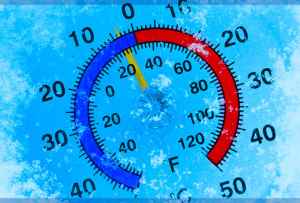

MedFriendly®


Absolute Temperature
Absolute temperature is temperature that is measured
from a reference point of an absolute zero. In other
words, the lowest temperature possible on such
temperature scales is zero degrees and there are no
negative temperatures (e.g., -10 degrees). Celsius and
Fahrenheit do not have absolute zero measurements
and include negative temperatures (e.g., -10 degrees).
This can be seen on a Celsius to Fahrenheit
FEATURED BOOK: Inventing Temperature: Measurement and Scientific Progress
"Where Medical Information is Easy to Understand"™
Temperature scales with an absolute zero are the Kelvin scale and the Rankine scale.
The Kelvin scale is more commonly used for absolute temperature measurements. A
temperature of zero degrees on the Kelvin and Rankine temperature scales is equal to -
273.15 degrees on the Celsius temperature scale and -459.67 on the Fahrenheit
temperature scale. There is no temperature colder than absolute zero, which is
significantly different from non-absolute zero on the Celsius and Fahrenheit scales.
Thus, absolute zero literally means there is no temperature below it whereas non-
absolute zero should not be taken literally as zero since there are temperatures that
exist below it.
Absolute zero is considered a theoretical temperature because it has never been
achieved. However, it is possible to approach temperatures close to absolute zero and
nearly all motions of matter particles stop at that point.
















